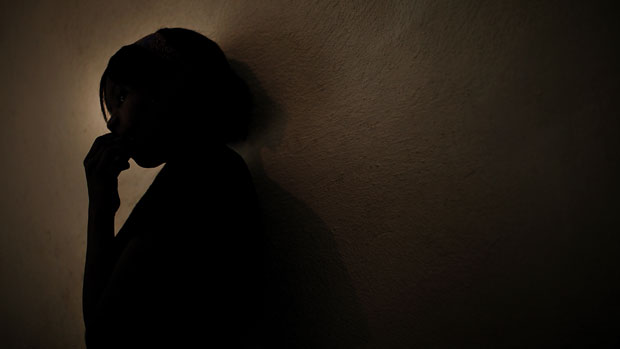Girls learn young that violence towards them is 'normal'
When schoolgirls report being pushed and kicked by boys, it is too often trivialised, says Nancy Lombard

THE LATEST European survey on violence towards women did the usual rounds with the same old figures when it was released earlier in the month. One in three women have experienced abuse in their lifetime, one in ten within the past 12 months.
We know this; we can recite these figures off by heart. The report is simply more evidence of the pervasive extent of women’s experiences of violence that is so ingrained in our societies.
It may even aggravate the problem. Arguably the continued recognition of the magnitude of violence against women results in further normalisation rather than leading to resistance.
The Week
Escape your echo chamber. Get the facts behind the news, plus analysis from multiple perspectives.

Sign up for The Week's Free Newsletters
From our morning news briefing to a weekly Good News Newsletter, get the best of The Week delivered directly to your inbox.
From our morning news briefing to a weekly Good News Newsletter, get the best of The Week delivered directly to your inbox.
We know that locally, nationally and globally, men’s violence against women is an endemic social problem and an enduring human rights issue within all societies and cultures. This is confirmed by official data reproduced worldwide, year after year.
My experience
I have been a volunteer, activist and researcher in the field of violence against women since I was 18. My most recent research looked at what primary school children think about men’s violence against women.
When I was writing up the research I reflected upon my autobiographical path, thinking about why I became interested in this field. Often women do this because of direct experience, but I had always assumed I was not one of them, as I didn’t have any personal history.
A free daily email with the biggest news stories of the day – and the best features from TheWeek.com
But when I sat down and reflected I was shocked, not only by the list of abuses I had experienced, but by my normalisation and minimisation of them – and how I still remained affected.
It has been argued that the experience or naming of violence is not always an immediate one. Rather it can be “experienced by the woman or girl at the time or later, as a threat, invasion or assault”.
My own recalled experiences of abuse included: physical abuse, experiences of coerced sex, flashing and indecent exposure, sexual assaults, physical assaults, verbal sexual abuse. Being aware of the ways in which I normalised personal experiences of violence made me acutely sensitive to the stories by the young people in my study of their own experiences and how they view men’s violence against women.
Interview participants
I asked boys and girls aged 11 and 12 about what they understood violence was and how and why it happened. I also spoke to them about their own lives, friendships and experiences.
For the majority, violence was something that happened in a public place, between adult men who were physically fighting. There would be visible injuries and the men’s behaviour would be stopped. They would be told they were wrong and suffered consequences, such as jail.
This same sequence was replicated at school. Boys would physically fight in public and be told by the teachers or playground assistants that their behaviour was wrong and they were punished for it.
But that didn’t happen for the girls. They talked about being pushed, shoved, kicked, followed and called sexual names by their male peers. Their experiences did not fit the usual description of “real” violence, involving men fighting in public and suffering official reaction and consequences.
Time and time again, when the girls approached teachers or other authority figures they were dismissed for telling tales or raising something perceived as trivial. Or they were relayed that old adage, “he’s only doing it because he likes you”.
Naming violence
Having their behaviour minimised and normalised in this way meant the girls' experiences were invalidated. This is then typically replicated in their adult lives by what has been termed the “everyday interactions” between men and women.
For me this also explains why countries such as Denmark and Sweden had higher figures for men’s violence against women in the recent study. Countries with greater levels of gender equality are more likely to provide official recognition for women, which enables them to not only name but also define their experiences as violence.
We need to start acting upon these figures rather than finding different ways of presenting the same old story. Preventive education and public awareness campaigns to encourage resistance to violence are essential.
But we also need to challenge the normalisation of violence. We must contest the dynamics in heterosexual relationships where men’s power over women is naturalised, normalised and used as a justification both of and for the violence.
Nancy Lombard is a lecturer in Sociology and Social Policy at Glasgow Caledonian University. This article was originally published on The Conversation
.
-
 A foodie guide to Edinburgh
A foodie guide to EdinburghThe Week Recommends Go all-out with a Michelin-starred meal or grab a casual bite in the Scottish capital
-
 Political cartoons for December 24
Political cartoons for December 24Cartoons Wednesday's political cartoons include Christmas in Greenland, grinchflation, and California floods
-
 Is there a Christmas truce in the Starmer farmer ding-dong?
Is there a Christmas truce in the Starmer farmer ding-dong?Today’s Big Question There’s an ‘early present’ for farmers but tensions between Labour and rural communities remain
